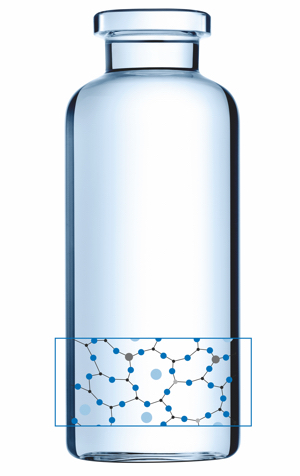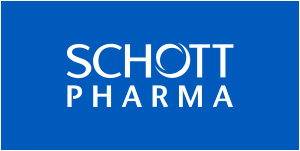The rise of biotech drugs has given birth to new possibilities and business models, but it has also made drug manufacturing more demanding than ever. Consequently, how pharma companies select and deploy primary packaging for their drug products is adjusting to new rules of play. Manufacturing Chemist spoke with Professor Volker Rupertus about the challenges of 21st century primary packaging — and why a ‘one fits all’ approach is not enough for the next generation of drugs.
Professor Rupertus, there seems to be a rising interest in the quality cost related to primary packaging. What is your take on this?
We are actually very grateful that this discussion has been raised to the highest levels. In my experience, pharma companies do consider packaging as an integral part of the drug product. Yet the focus is now shifting towards a holistic approach, which includes individual requirements of the drug, the performance of the filling concept and primary packaging, as the connecting link between the two. This is a very positive development for patient safety and for healthcare costs.
If packaging is the connecting link, how does this impact the cooperation between pharma companies and packaging suppliers?
Today, all major players have set up programmes to include packaging suppliers in the early stages of drug development, usually between clinical phase II and III. The central theme here is supplier-driven innovation: If the supplier knows what is in the drug pipeline, they can focus on packaging innovations that are relevant to the market. The same applies for suppliers of fill & finish technology. In the future, it could be very beneficial to step up the dialogue between formulation developers and packaging suppliers as well as fill & finish specialists. I would even say that this calls for a new type of cooperation mindset among the suppliers themselves.
What do you mean by that?
Drug shortages and supply safety are major industry issues. Most drug manufacturers follow a dual sourcing strategy. What we hear from the pharma companies is that they would indeed welcome a stronger cooperation among suppliers. If suppliers focus on tried-and-true industry standards such as standardised and validated systems, the adoption of packaging innovations will increase and shorten time-to-market.
How does the idea of standardisation go together with the individual packaging requirements of a drug?
That is exactly the point. Taking standards as a basis allows for the modular development of packaging options. This, in turn, enables flexible and TCO-optimised (Total Cost of Ownership) container solutions tailored to the requirements of the drug itself and the filling process alike. Whereas the diversity of present and future drug formulations call for an increasing variety of container options, e.g. functional contact surface coatings or delamination controlled containers, the standardisation of transport solutions or intermediate secondary packaging like nests, tubs or trays would help to reduce processing complexity and involved costs.
In particular, costs resulting from drug-container interaction during its shelf life have to be carefully analysed. During the mandatory stability studies, the utility of different glass compositions and specially conditioned inner surfaces of the containers have to be assessed to minimise the risk of delamination or the creation of chemical reactions like aluminophosphate particle growth, which is difficult to predict, due to the broad variety of potential chemical binding partners.

SCHOTT Vials delamination controlled
Speaking of total cost of ownership — which questions need to be asked?
Typical questions to ask include
- Where does the drug stand in the lifecycle or what future volumes would benefit from a change in packaging or fill & finish?
- What is the impact of resulting administrative or regulatory procedures?
- Is outsourcing of certain process steps such as RTU (Ready-To-Use) packaging solutions or outsourcing of fill & finish to contract manufacturers an option?
The performance of the packaging on the filling line and related quality costs are a very interesting aspect as well.
Here, a detailed understanding of which single measure delivers what cost benefit forms the ground for appropriate change.
As we have learned from our customers — sometimes a minor adjustment of the filling line can result in two digit yield improvements.
Are you referring to breakage in this context?
Yes, though machinability is a lot broader than this. In the first instance, one has to understand where breakage comes from. Existing pharmaceutical glass already has a remarkably high strength. Its weak points are small cracks on the surface or edges, which cause mechanical stress that can lead to breakage if these micro-defects are exposed to rough glass handling. This phenomenon mostly appears on older filling lines. Today’s high speed fill & finish technology enables a remarkable smooth handling of glass containers, primarily driven through glass to glass contact free container transport and innovative contact materials. Furthermore, with the increasing adoption of new production concepts and aseptic filling, where the glass container is fixed in a nest to lessen glass-to-glass contact, the problem of breakage should naturally be reduced.
Is there also a solution to breakage on the material side — such as toughening treatments, a new type of glass or a complete shift to polymer?
Certainly, applications such as toxic, radioactive or emergency drugs require breakage-resistant solutions in the field. Again, the best solution depends on each individual scenario, including requirement of the drug and production setup. Polymers can be an interesting alternative. It has a glass-like appearance and is resistant to breakage, yet has weaker barrier properties. When it comes to glass, chemical toughening procedures for existing Type-I pharmaceutical glass have been used for decades, so a variety of solutions are already available.
Given the fact that changing the container material is bound to regulatory procedures, do you have any advice for pharma companies who want to reduce the risk of breakage?
First and foremost, I would focus on a high cosmetic quality of the packaging currently in use. In fact, an intact surface will already make a glass vial twice as resistant without any additional treatment. A high cosmetic quality not only makes the vials less susceptible to breakage, but it also improves machinability and facilitates automated machine inspection during filling operations.
Finally, what makes a good packaging supplier for the pharma industry?
First, one that has modular packaging options for all the different drug types in a pharma company’s portfolio. Second, one that is committed to the market, as supply needs to be secure for decades once a pharma company has decided for a certain packaging. Third, one that acts as a partner and is interested in joint developments to find the best possible packaging solution for a drug.





